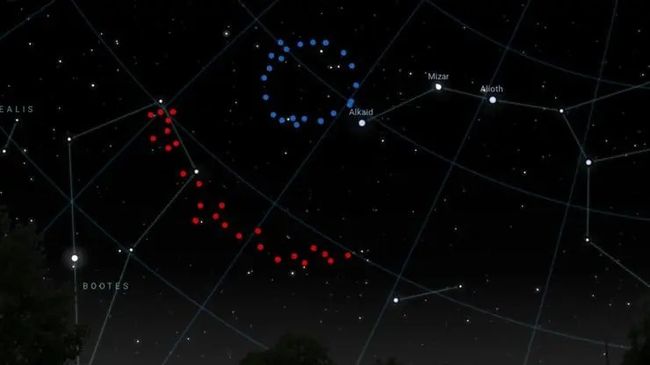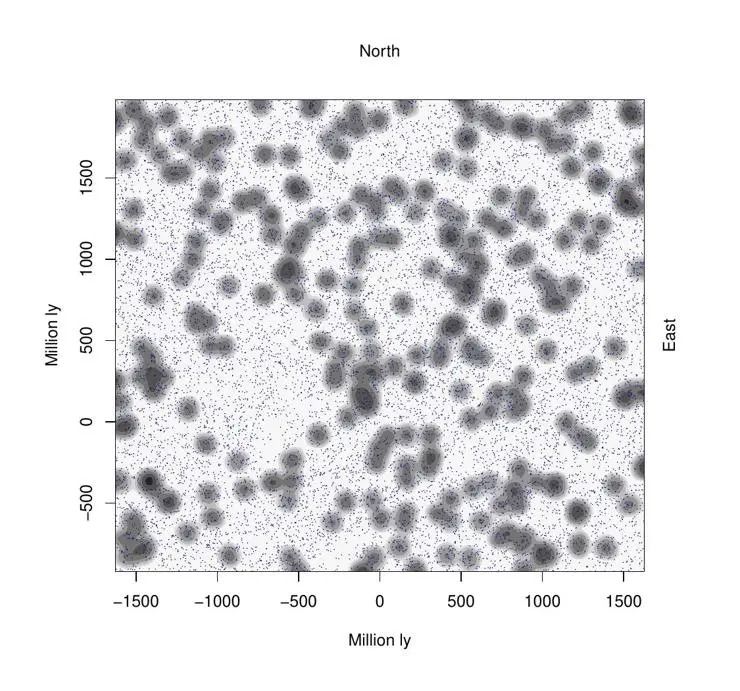A massive ring of galaxies could potentially guide us towards groundbreaking discoveries in the field of physics. Here is the explanation.
The ring of galaxies, named Big Ring stylistically, circumvents a span of about 4 million light-years.

Astronomers have found a galactic structure that looks like a ring and is super-massive, where our own Milky Way sits in one of its arms. The size of the structure is hard to conceptualize. Such an object is so big and deeply embedded in nature that perception of it brings it as it was 9.2 billion years ago.
It soars to the sky in a form of a true heavenly body and is called “The Big Ring” in our language code. It covers a diameter of 1.3 billion light-years and has a circumference of more than 4 billion light-years. This giant arc is only as wide as 1.6 million light-years, but it is actually situated just beside a serially immense space structure known as “Giant Arc in the Sky,” which is far larger, having a diameter of 3.3 billion light-years. While the Giant Arc is at a greater distance than us in the constellation of Boötes-the Shepherd, it can be seen with a good quality instrument. Unfortunately, these ghostly, gossamery structures couldn’t be observed even and with a backyard telescope.
In fact, although both mentioned bodies of water were included in observations performed by the 79800718.43035648 font Anders et al. 2.5-meter telescope of the SDSS project at the Apache Point in New Mexico, the US, by Alexia Lopez. During an astonishing observation, Lopez, a PhD student in UK’s University of Central Lancashire, identified these giant structures in superstructures in a different way. It is not because the galaxies are so bright, rather they absorb indistinct light from more distant quasars. Astronomers divide quasars into two categories; they’re either the high luminosity regions of active galaxies or the supermassive black holes’ centers with high brightness.
“In such short distance there are two great extra-large structures, the probability arises that these two together with form the even more extra-ordinary system in universe,” said Lopez in an interview.

“One channel could possibly be the mentioning of baryonic acoustic oscillations” theorizes lopex. “[These] arise from oscillations in the early universe and today should appear, statistically at least, as spherical shells in the arrangement of galaxies. However, detailed analysis of the Big Ring revealed it is not really compatible with the BAO explanation: the diagram is not perfect, it has a large ring, and it is not true spherical.
The structure of the universe according to cosmological theory should result in the biggest objects – in chains of the most distant galaxies – that would be, at most, 1.2 billion light-years in length. However, the radius of the big circular Big Ring and the distance to the giant Giant Arc are so huge thus causing this limitation. To quantify how huge these objects are, when the Giant Arc is viewed with all respect, it is 2% of the radius of the entire universe that you see at night.
Indeed, besides Sloan Great Wall, there are other giant conglomerations in outer space as well; the Great Wall is 1.37 billion light-years-long and about a billion light years far from us. If the two of these are considered the first to be discovered, the South Pole Wall of galaxies is a relatively newer structure, being 1.4 billion light-years in length. We can’t neglect the Clowes-Campusana LQG as well. The same two billion light-years have been crisscrossed by the group of quasars—led by its own quasar—which Roger Clowes (who is also Lopez’s PhD advisor), had co-discovered this huge LQG. The universe today that is 12 billion light-years away is seen in us as about 9.5 billion years ago.
The biggest supercluster known to us, namely Laniakea Supercluster, is significantly larger than the one we are in – called Milky Way – which is just 520 million light-years across.
Additionally, there are indications of much larger structures, the dark flow is the motion of many galaxies that are visible in the visible universe. It seems that the motion drifts to a certain direction, as though something behind the cosmic horizon was pulling the galaxies through a specific path. Nevertheless, it is uncertain to some scientists that the phenomenon of dark flow exists in particular.
These superstructures are too large to fully comprehend how they originated, as well as how they violate the Cosmological Principle, a foundational assumption of the Standard Model of Cosmology. According to this principle the distribution of matter in the universe must be symmetric and there shouldn’t be any significant difference between any two regions. However, it is evident that the upper structures, especially the Big Ring and the Giant Arc, very much stand out.
“Both of these two giant objects are not simple to clarify in our current understanding of the universe,” said Lopez. “Besides, their huge sizes, unique shapes, and close proximity to the universe, must be communicating some crucial message; then what is that message?”
Another option could be that the structures are related to known physics, but in a very exotic manner or may point to new physics. For example the Nobel Laureate Sir Roger Penrose who is a professor emeritus at University of Oxford proposed a model called Conformal Cyclic Cosmology as explaining cyclic universe. As per this theory, gravitational waves from earlier some epochs of the universe may reflect as giant circular structures in CMB. Penrose model has not been widely accepted so far among the experts, but could the Big Ring and Giant Arc make it competitive?
One more possibility is that these giant structures are symptom that the universe carries cosmic strings which are thin threads in spacetime believed to have arose from Big Bang. Real cosmic strings might have a thickness of the width of a proton though much longer, stretching on a virtually infinite observed length of light years. The hypothesis that cosmic strings do exist has been raised and it is believed that such strings might cause the matter’s clustering.
“The Large Circle and the Giant Arc, independently and together, creates us a huge cosmological puzzle as we struggle to figure out the world and its formation.” said the expose, Lopez concluded.
That is the report of Katarina Lopez, who presented the findings at the 243rd meeting of the American Astronomical Society.
Do not forget to share your opinion with us to provide you with the best posts !




0 Comments